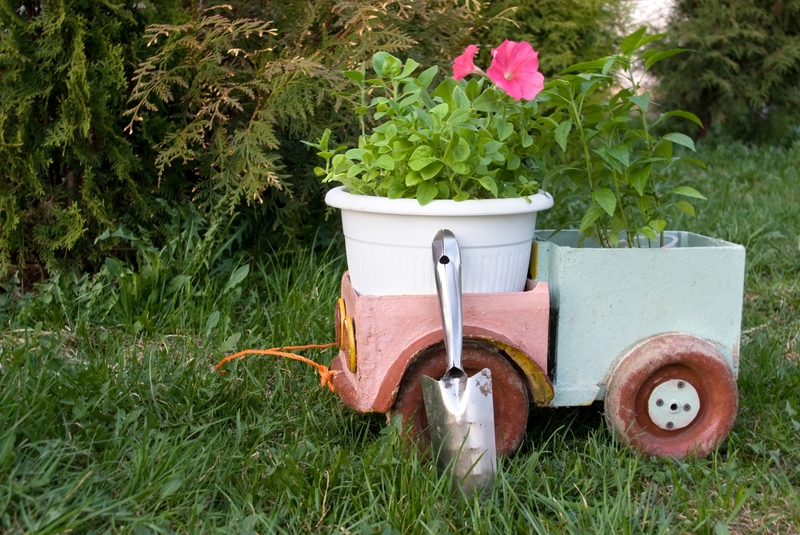
Plastic Pitfalls: Which Ones to Avoid
Plastics have revolutionized the way we live, offering convenience, durability, and affordability. From packaging to household goods, plastics are everywhere. But the ubiquity of plastic comes at a significant environmental and health cost. Knowing which plastics are safe and which to avoid is crucial for consumers who want to make informed, planet-friendly choices. This article explores the major plastic pitfalls, revealing what to watch out for in your daily life with comprehensive details and actionable advice.
- Why Plastic Can Be Problematic
- Understanding Plastic Identification Codes
- The Plastics to Avoid
- Safer Alternatives to Harmful Plastics
- Tips for Reducing Your Plastic Footprint
- Conclusion
- FAQs
Why Plastic Can Be Problematic
Plastics are made up of long polymer chains derived mainly from petroleum. While they have myriad uses, certain plastics are linked to environmental pollution, health risks, and toxicity. Over time, harmful chemicals can leach out of plastics, contaminating food, water, and even the air we breathe. Moreover, plastic waste contributes to landfill overflow and ocean pollution, devastating marine ecosystems and wildlife.
Plastic pitfalls can be categorized primarily into two areas:
- Human Health Risks: Some plastics contain additives like phthalates, BPA (Bisphenol-A), and heavy metals that are linked with hormone disruption, cancers, and developmental issues.
- Environmental Hazards: Most plastics are not biodegradable and can persist in the environment for centuries, breaking into microplastics that contaminate food chains.
Understanding Plastic Identification Codes
To help identify the various types of plastics, products are marked with a triangular recycling symbol containing a number from 1 to 7. These plastic identification codes are essential for sorting plastics, recycling efficiently, and understanding which plastics to avoid in daily life.
The Seven Major Plastic Codes Explained
- 1 - PET or PETE (Polyethylene Terephthalate): Common in water and soda bottles, cooking oil containers. Generally considered safe for single use, but not recommended for reuse as it can harbor bacteria and leach chemicals over time.
- 2 - HDPE (High-Density Polyethylene): Used in milk jugs, detergent bottles, and some toys. Widely recycled and regarded as safe for food and beverage storage.
- 3 - PVC (Polyvinyl Chloride): Found in pipes, clear food packaging, shrink wrap. Known for its flexibility, but often contains toxic additives like phthalates and lead.
- 4 - LDPE (Low-Density Polyethylene): Used in bread bags, squeezable bottles, and plastic wraps. Generally considered safe, but not widely recycled.
- 5 - PP (Polypropylene): Used in yogurt cups, medicine bottles, straws. Heat resistant and often labeled microwave/dishwasher safe.
- 6 - PS (Polystyrene): Appears as foam cups, takeout containers, packing peanuts. Known as Styrofoam, it may leach styrene which is a possible carcinogen.
- 7 - Other (BPA, Polycarbonate, Other plastics): A catch-all for plastics not listed above. Often contains BPA or other controversial chemicals.
The main plastic pitfalls are found among codes 3, 6, and 7, which we explore in further detail below.
The Plastics to Avoid
Not every type of plastic presents the same risk. Several variations are especially notorious for their health and environmental hazards. Let's break down which plastics to avoid and why:
Polyvinyl Chloride (PVC) - Code 3
- Where It's Found: Plumbing pipes, cling wrap, medical equipment, toys, shower curtains.
- Health Concerns: PVC contains phthalates (used to increase flexibility), which are known endocrine disruptors. PVC manufacturing releases dangerous chemicals like dioxins, which are classified as human carcinogens.
- Why Avoid: Direct contact or ingestion of PVC leachates can impact the liver, reproductive systems, and overall hormone balance.
Tip: Look for phthalate-free or PVC-free labeling, especially when purchasing toys or food-related products.
Polystyrene (PS) - Code 6
- Where It's Found: Disposable coffee cups, take-out food containers, cutlery, packing materials.
- Health Concerns: Leaches styrene, a probable human carcinogen, especially when heated or in contact with acidic foods. Can also cause neurotoxic effects.
- Why Avoid: Difficult to recycle and a major contributor to ocean microplastic pollution.
Tip: Choose reusables made from glass, stainless steel, or safer plastics instead of Styrofoam.
Other Plastics - Code 7
- Where It's Found: Baby bottles, water cooler jugs, storage containers, sports equipment, DVDs.
- Health Concerns: Can include BPA (Bisphenol-A), which is linked to hormonal disturbances, potential cancer risk, and behavioral problems in children.
- Why Avoid: These plastics are often unclear in composition, can leach unknown chemicals, and are rarely recycled.
Tip: Opt for products labeled "BPA-free" but be aware of substitute chemicals (like BPS) that may be similarly hazardous.
Unexpected Plastic Pitfalls to Watch Out For
- Canned Food Linings: Many cans are lined with BPA-laden epoxy to prevent corrosion.
- Cash Register Receipts: Some receipts are coated with thermal paper containing BPA or BPS.
- Microwave Dinners: Microwaving plastics can increase the leaching of toxins.
- Children's Toys and Baby Items: Always check for phthalate-, PVC-, and BPA-free certifications.
Safer Alternatives to Harmful Plastics
While some plastics are best avoided, others are relatively safe for consumer use and better for the environment. The following plastic codes are generally considered the least hazardous:
- 1 (PET or PETE): Best for single-use only. Recycle promptly, do not reuse for storing food or beverages.
- 2 (HDPE): Widely recycled and safe for food storage. Common in milk and juice jugs.
- 4 (LDPE): Used for bread and frozen food bags. Not as hazardous but less often recycled.
- 5 (PP): Used in yogurt containers, butter tubs, straws. Suitable for microwaving and dishwasher use but always check for specific manufacturer guidance.
Even among these, care should be taken:
- Avoid exposing plastic containers to high heat or long-term reuse.
- Do not store fatty or acidic foods in plastic for extended periods unless the container is labeled safe for that use.
Better Than Plastic: Switch to Sustainable Materials
Whenever possible, replace plastics with natural or more durable materials to avoid unintended plastic pitfalls:
- Glass: Non-porous and inert, perfect for food storage and reusable bottles.
- Stainless Steel: Ideal for water bottles, lunchboxes, and cookware.
- Bamboo: Compostable and renewable option for cutlery and some packaging.
- Silicone: Long-lasting and generally safe, great for bakeware and baby products.
Tips for Reducing Your Plastic Footprint
Minimizing exposure to dangerous plastics and reducing plastic waste is easier with a few simple habits:
- Read Labels Carefully: Look for plastic codes and certifications. Avoid PVC, polystyrene, and plastics with no clear recycling symbol.
- Choose Reusable Over Disposable: Replace single-use plastic bags, bottles, and straws with durable alternatives.
- Buy in Bulk: Reduce packaging waste by purchasing in bulk whenever possible, using your own reusable containers.
- Avoid Microwaving Plastics: Heat increases chemical leaching, so transfer food to glass or ceramic before reheating.
- Support Plastic-Free Brands: Many companies now offer plastic-free packaging for groceries, beauty products, and cleaning supplies.
- Be Wary of "BPA-Free" Claims: Some products may use equally hazardous bisphenol alternatives like BPS or BPF.
Conclusion
The modern world is inseparable from plastic, but not all plastics are created equal. Understanding which plastics to avoid empowers you to make healthier choices for yourself, your family, and the planet. By steering clear of PVC, polystyrene, and ambiguous "other" plastics, and by replacing disposable items with safer, reusable alternatives, you can help fight pollution and safeguard your health. Simple changes in purchasing and usage habits make a lasting difference in reducing exposure to the most harmful plastics.
Choose consciously, and spread the word about the dangers of plastic pitfalls--because every small step counts for a cleaner future.
FAQs - Avoiding Plastic Pitfalls
- Q: How can I tell which plastics to avoid?
A: Check the recycling number on the product (inside the triangle symbol). Avoid plastics with the numbers 3 (PVC), 6 (polystyrene), and 7 (Other/BPA) whenever possible. - Q: Is "BPA-free" plastic always safe?
A: Not necessarily. Some "BPA-free" items contain substitute chemicals (like BPS or BPF) which may pose similar health risks. Glass and stainless steel are best alternatives. - Q: Are microplastics a concern from everyday plastic use?
A: Yes, especially from food packaging and plastic bottles exposed to heat or abrasion. Microplastics have been found in drinking water, seafood, and even in the air. - Q: What should I do with plastics I can't avoid?
A: Recycle responsibly according to local guidelines, reduce overall usage, and choose products with minimal packaging. Always avoid heating or scratching plastic containers. - Q: Why is plastic so hard to avoid?
A: It's light, versatile, cheap, and durable, which is why it's used in so many products. But making safer, informed choices is possible!
For further resources, visit local recycling centers, environmental organizations, and government websites on plastic safety and sustainability. Together, we can avoid plastic pitfalls for good!
